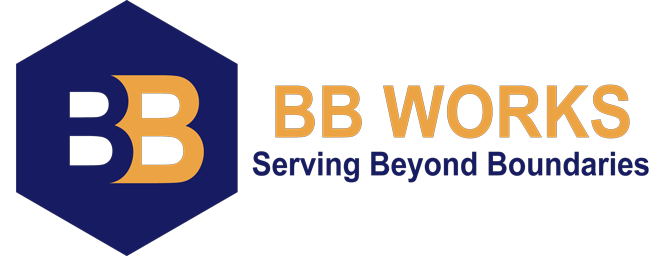In today’s fast-paced and demanding work environment, achieving balance and wellness is crucial for employees and organizations. By prioritizing workspace wellness, companies can create an atmosphere that promotes productivity, job satisfaction, and employee well-being. This comprehensive blog will delve into various aspects of workspace wellness, focusing on how employees can effectively manage work-life balance, cope with workplace stress, create peaceful environments, and develop strategies to overcome challenges.
- Work-Life Balance: Striking the Right Equilibrium
- The Importance of Work-Life Balance:
Achieving work-life balance is essential for maintaining physical and mental well-being. It allows employees to effectively juggle their professional responsibilities with personal life commitments, leading to greater job satisfaction and reduced burnout. - Strategies for Managing Work-Life Balance:
- Setting Clear Boundaries: Encourage employees to establish clear boundaries between work and personal life, such as defining specific working hours and creating dedicated spaces for relaxation.
- Effective Time Management: Provide tips and techniques to help employees prioritize tasks, delegate responsibilities, and make the most of their working hours.
- Flexible Work Arrangements: Highlight the benefits of flexible work options, such as remote work or flexible schedules, that can empower employees to achieve a better work-life balance.
- The Importance of Work-Life Balance:
- Coping with Workplace Stress: Building Resilience
- Recognizing Workplace Stress:
Shed light on common stressors in the workplace, such as excessive workload, tight deadlines, interpersonal conflicts, and lack of resources. Explain how chronic stress can negatively impact physical and mental well-being. - Stress-Relief Techniques:
- Mindfulness and Meditation: Introduce mindfulness practices and meditation techniques to help employees manage stress, improve focus, and enhance overall well-being.
- Physical Activity and Exercise: Highlight the benefits of regular exercise in reducing stress levels and boosting mood. Suggest incorporating physical activity into the workday, such as walking meetings or desk exercises.
- Stress-Management Workshops: Advocate for hosting workshops or training sessions that provide employees with practical tools and techniques to effectively manage and reduce stress.
- Fostering a Supportive Work Environment:
Encourage open communication and empathy within the workplace, promoting a supportive culture where employees can seek assistance, share concerns, and receive emotional support from colleagues and managers. Emphasize the importance of fostering positive relationships and cultivating a sense of belonging.
- Recognizing Workplace Stress:
- Creating Peaceful Work Environments: Designing for Well-being
- Ergonomics and Comfort:
Discuss the significance of ergonomic workspaces and provide recommendations for optimizing workstations, such as adjustable desks, supportive chairs, and proper lighting. Educate employees about the importance of maintaining good posture and taking regular breaks to prevent physical strain. - Noise and Distraction Management:
- Designated Quiet Spaces: Advocate for the creation of quiet areas or designated zones where employees can work without excessive noise or distractions.
- Noise-Cancelling Technology: Suggest using noise-cancelling headphones or sound-masking devices to minimize auditory distractions and increase focus.
- Time Management Techniques: Provide strategies for effectively managing time and setting boundaries to minimize interruptions and distractions.
- Incorporating Nature and Green Spaces:
- Biophilic Design: Explain the benefits of incorporating elements of nature into the workspace, such as plants, natural light, and views of greenery. Discuss how biophilic design can improve mood, productivity, and overall well-being.
- Outdoor Break Areas: Encourage the creation of outdoor spaces or gardens where employees can take breaks, connect with nature, and recharge.
- Ergonomics and Comfort:
- Overcoming Workplace Stress: Challenges and Effective Strategies
- Identifying Workplace Stressors:
Help employees identify everyday workplace stressors they may encounter, such as heavy workloads, tight deadlines, conflicts, or organizational changes. Encourage self-reflection and awareness of personal stress triggers. - Building Resilience and Support Systems:
- Emotional Support Networks: Encourage the development of strong relationships with colleagues and managers, fostering an environment of support and collaboration.
- Employee Assistance Programs (EAP): Highlight the availability of EAP services, which can provide confidential counselling, resources, and tools to help employees cope with workplace stress.
- Stress-Management Training: Offer stress-management workshops or training programs to equip employees with practical techniques for building resilience and effectively managing stress.
- Workload Management and Prioritization:
- Effective Delegation: Encourage employees to delegate tasks when necessary and collaborate with team members to ensure a more equitable workload distribution.
- Time and Project Management Tools: Introduce helpful tools and techniques that assist employees in managing their workload, such as project management software, task organizers, or scheduling applications.
- Identifying Workplace Stressors:
Conclusion:
Achieving workspace wellness is a collective effort that benefits both employees and organizations. By prioritizing work-life balance, providing effective stress-management techniques, creating peaceful work environments, and implementing strategies to overcome challenges, companies can foster a culture of well-being, productivity, and employee satisfaction. Remember, workspace wellness is an ongoing journey, and by continuously investing in employee well-being, organizations can thrive in the modern workplace landscape.
